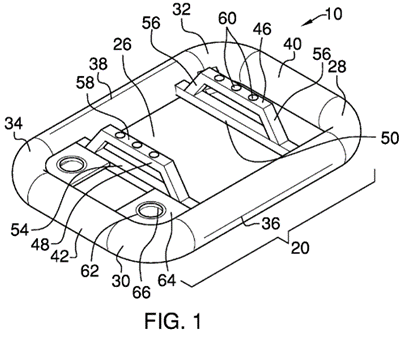The US Court of Appeals for the Federal Circuit concluded that patents and applications that have only ever contained claims with an effective filing date after March 16, 2013—i.e., pure America Invents Act (AIA) patents—may not be subjected to an interference proceeding by the US Patent & Trademark Office (PTO) Director. SNIPR Techs. Ltd. v. Rockefeller Univ., Case No. 2022-1260 (Fed. Cir. July 14, 2023) (Chen, Wallach, Hughes, JJ.)
SNIPR Technologies owns a family of five patents directed to methods of selectively killing bacteria using clustered regulatory interspaced short palindromic repeats (CRISPR) gene editing. SNIPR was involved in an interference proceeding with Rockefeller University, which filed a patent application for technology also directed to selectively killing bacteria. The SNIPR patents claimed priority to a Patent Cooperation Treaty application filed on May 3, 2016, thus placing the SNIPR patents squarely within the scope of the AIA. The Rockefeller application claimed priority to, among other things, a US provisional application filed on February 7, 2013, making the Rockefeller application a pure pre-AIA application. The Patent Trial & Appeal Board initially declared an interference between claims 20 to 33 of the Rockefeller application and all claims of the SNIPR patents. The Board ultimately identified Rockefeller as the senior party and canceled all of SNIPR’s claims. SNIPR appealed.
The issue before the Federal Circuit was whether the Board had the authority to cancel SNIPR’s pure AIA claims for lack of invention priority under pre-AIA § 102(g), and more broadly, whether pure AIA patents may, as a matter of law, be part of an interference proceeding.
First, the Federal Circuit examined the plain language of AIA § 3(n) and the statutory purpose and history of the AIA. The Court reasoned that “AIA § 3(n) makes clear that [unless Congress provides otherwise,] only pure pre-AIA and mixed patents may be part of an interference.” As the Court stated, AIA § 3(n)(1) does not permit the AIA’s amendments to apply retroactively and the AIA repealed the statutory grant of power to hear interferences (pre-AIA § 135), instead providing for derivation proceedings.
Next, the Federal Circuit addressed Rockefeller’s and the Director’s arguments that the statutory language of pre-AIA § 135(a) authorizes the Director to declare an interference for “any unexpired patent”—including unexpired pure AIA patents. Unpersuaded, the Court concluded that pre-AIA § 135(a), read in conjunction with the AIA, excludes pure AIA patents for the following reasons:
- The AIA replaced interference proceedings with derivation proceedings.
- The AIA deleted all other references to interferences.
- The AIA repealed the first-to-invent system of patentability, rendering interference proceedings superfluous.
- Permitting interferences for pure AIA patents would subject AIA patents to interferences “for over twenty years after the AIA’s effective date,” which would be contrary to the purpose of the AIA—to implement the first-to-file system of patentability.
Moreover, such a statutory construction would belie AIA § 3(n)(2), which expressly allows for interferences for mixed patents (i.e., patents and applications that contain, or contained at any time, at least one claim with [...]
Continue Reading
read more


 Subscribe
Subscribe



